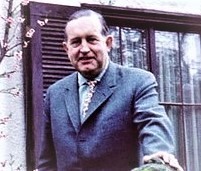By David Soloman
It’s hard to explain why, but there’s something about ‘Lili Marlene’ that makes it one of the most poignant love songs ever to be written. Today it continues to tug at heartstrings, a little over a century later – actually 106 years – after it was first penned, originally as a three-verse poem, by a young German soldier from Hamburg, Hans Liep, in 1915, just a day before he was to called up by his country to serve in the army on the Eastern Front. The grief and despair of parting from loved ones and the hope of meeting again in another time and place became the inspiration for his composition.
But who was Lili Marlene? Was she actually a real person? The answer is both ‘Yes’ and ‘No’. Liep combined the first names of his girlfriend and another woman to come up with ‘Lili Marlene’. Ever since then, she remains the most hauntingly beautiful and enigmatic ghost of World War II.
It would take another 24 years before it captured the world’s imagination after German composer Norbert Schultze set it to music in 1939, and Liep added on another two verses. The song was recorded in German by cabaret singer Lieselotte Bunnenberg, better known by her stage name, Lale Andersen. The ultimate version that the world has come to idolise, was recorded in 1944 both in German and English by Hollywood screen goddess, Marlene Dietrich, with her sultry and smoky voice, exuding its special brand of sensuality.
The song has a heart-breaking poignancy, full of agonising despair and boundless hope. That’s the irony of war that evokes such utterly contrary feelings of hopelessness and desolation on the one hand and the undying hope of reuniting with a loved one after war, on the other.

German-born American actress Marlene Dietrich. Her recording of
Lili Marlene in 1944, is the best-loved version of the song ever since.
People of this generation know little or nothing about Lili Marlene’s magical appeal or Hollywood screen goddess, Marlene Dietrich. But for ‘Baby Boomers’ born during the transitional cusp of the post-World War II era, there was a palpable connection, either through vintage movies, familiar wartime melodies still being played by radio stations, or from parents often singing these very songs themselves. As college students in pre-independent India (Lucknow), especially during the peak years of the Second World War, both my parents had ample exposure to the British Raj of those days. Tommies – a popular nickname for British soldiers during the War years – were a familiar sight in Lucknow, with its large cantonment and strong military presence. It was one of their most favourite songs; they loved to sing it as they walked or staggered along, singing ‘Lili Marlene’ .
The poshest place in the city, Hazratganj, was then compared to Britain’s own fashionable and upmarket Bond Street in the West End of London. The Mayfair Ballroom on Hazratganj, with its live dance orchestra and liquor that flowed fast and freely, was a popular haunt for the Tommies. As a bachelor then, Dad was a frequent visitor here. Soon after independence, Mayfair became one of the best cinema halls of Lucknow, until it was closed down in the mid-nineties.
Years later as a married man, I remember my Dad doing hilarious imitations of tipsy Tommies trying to get through ‘Lili Marlene’ in 100 different ways. At other times he loved to play this song on his German Harmonica, on long winter evenings standing by the bedroom fireplace. Mums would sing Lili Marlene, too, in her fine contralto voice. The song was also popular on Radio Ceylon, which regularly aired music of World War II vintage.
It was only after the Germans captured Belgrade, did Lili Marlene acquired a life of its own. The town’s radio station had a powerful transmitter. The Germans thought it would be suitable for broadcasting propaganda music and speeches. And that’s how ‘Lili Marlene’ went on air on April 18, 1941. It became Radio Belgrade’s signature song, to be played as the closing item of the broadcast. It didn’t take long for the song to become a hit, both with the German troops and Allied troops. It was unstoppable and Lale Andersen was on a roll.

Her song was a balm in a war-torn
World for everyone, every day

Hans Liep – the man who wrote
The song in 1914-15

Norbert Schultze – composed the
Music for the song in 1939
When the song was broadcast, a hush would descend as if by magic. Wherever they were – out in the open, under the stars, in their trenches or bunkers, or on guard duty – Germans or Allied troops alike – everyone was listening in rapt silence. All thoughts of war, hatred or killing, were swept aside or forgotten, at least for a few precious minutes. They weren’t soldiers anymore, just ordinary human beings thinking of love, home, family. Some of them were actually thinking of their lady-love, waiting for them on a quiet street corner underneath the lamplight. This was the magic played out every evening around 10 pm when Radio Belgrade would sign off – the magic of Lili Marlene.
However, the song wasn’t well received by the German High Command. Propaganda Minister Goebbels thought it was hardly suitable as a military song and had it banned. Field Marshal Rommel of the famed Afrika Corps, who loved ‘Lili Marlene’ used his influence to have the order rescinded, so the song was back on air to the delight of soldiers on both sides. Over the radio, the song would reach all fronts in Europe and North Africa – 6 million listeners every night.
Soon other problems came up. British troops home on leave were singing the song in German. Worried about negative patriotic sentiments this might generate, Songwriter Tommie Connor was commissioned to write the English lyrics titled ‘Lily of the Lamplight’. And this is the song that lives on as an immortal love song, ‘Lili Marlene.’



